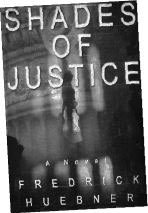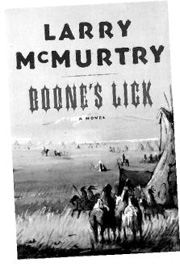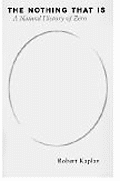When I was in high school I discovered a series of small-format books, put out by Time magazine, each volume emphasizing the events of a single year during the 20th century. They weren’t lengthy examinations, but I nonetheless found myself engrossed. And enlightened to see how many noteworthy happenings—both momentous and minor—could be jammed between the calendrical confines of a year. For sometime after that I built up files of newspaper clippings, thinking that someday I would have the raw material on which to base a similar series of my own.
1898: The Birth of the American Century by David Traxel (Knopf, $28.95)
America 1900: The Turning Point by Judy Crichton (Holt, $29.95)
The American Experience: America 1900 KCTS 9, November 18 at 8.
My mother finally tossed those clippings, which I had made the mistake of storing in a damp basement corner. But ever since, I’ve been attracted to books that concentrate on just one year. The problem always is in identifying a 12-month stretch that makes clear the culmination of incidents preceding it and also conveniently portends occurrences to come. Every year can be made to sound crucial. And not crucial enough.
David Traxel, author of 1898, and 1900 writer Judy Crichton must have struggled separately with this quandary. In both of their new books (and with substantial overlapping of anecdotes and characters) they seek to prove that their title year found the United States and its people on the most vertiginous edge of a new era, awaiting great economic, political, or social shifts. Neither can be said to have succeeded entirely.
Philadelphia historian Traxel takes as his premise that the American-dominated 20th century got a two-year jump on the calendar. 1898 saw the first sale of a gasoline-powered automobile made in an assembly process; the prodigious growth of New York City (as it swallowed Brooklyn and other boroughs); the first million-dollar advertising campaign (for a biscuit, of all things); and a war against the Spanish in Cuba that ultimately led to the United States acquiring the Philippines and Puerto Rico. Regrettably, for those of us not utterly charmed by talk of military strategy, it’s the Spanish-American War that consumes about half of this work—undoubtedly because that event, more than any other, proves the author’s thesis. Traxel recalls how President William McKinley—reluctant to commit the nation’s creaky war machinery to what critics debased as an imperialist endeavor—was forced into action by a bellicose Congress and the sinking of the battleship Maine in Havana harbor. Although the conflict was a massively bungled affair, it did close bitter divisions between the North and the South that had lain open since the Civil War, and it produced a number of engaging figures. Those included “Rough Rider” Theodore Roosevelt, seen here in all of his self-promoting glory, and Stephen Crane, who followed up publication of The Red Badge of Courage with a stint reporting on the Cuban hostilities.
Traxel has a researcher’s sharp eye for curious episodes, such as an unexpectedly late skirmish with Chippewa Indians in Minnesota and the tale of how L. Frank Baum chose the name for his magical kingdom of Oz. However, he makes a few embarrassing errors (in one case writing that Henry James moved to England in 1898—when he’d actually done that 22 years before), and he delves deeply into obscure events while practically dismissing the value of other deservedly less arcane ones (like the Klondike gold rush of 1897-99). Traxel also confirms why historians generally make lousy commentators: he can collect intriguing facts, but shies strangely away from interpreting them or giving them modern context.
Judy Crichton, a longtime producer of PBS’s The American Experience, whose 1900 is the companion to next week’s episode of that series, is not appreciably better at framing historical news and newsmakers within the nation’s time line. Yet there’s humor here, and a human scale that make this a more appealing work than Traxel’s.
One of the most interesting things is to see how many topics of discussion we share with the folks who proceeded us by 100 years—from racism to natural disasters, anxiety about big-money politics to the rampant merchandising of Christmas. The presidential race of 2000 will bring into focus another major similarity, except this time around the candidates will boast of near-identical campaign approaches, as they didn’t in 1900—Republican McKinley remained on his front porch in Ohio while his recently named VP, Roosevelt, stumped across the country on the heels of Democrat William Jennings Bryan.
Freed from having to detail a year dominated by wartime maneuvering, Crichton paints the highlights of 1900 through the eyes of a diverse set of people, some of whom found fame, while others—like bohemian photographer Frances Benjamin Johnson and African-American poet Laurence Dunbar—have been unjustly misplaced in the folds of time. Here we find Jack London beginning his writing career; Scott Joplin working up his ragtime style; and the Wright brothers trying to keep their flimsy airplane from crashing at Kitty Hawk. The plenitude of photographs in 1900 gives readers a good image of life back then. (By comparison, 1898 offers so few photos that you wonder why the publisher bothered with them at all.)
Despite Crichton’s subtitle—”The Turning Point”—her book doesn’t so much make the case that 1900 was a watershed year as it seems designed for people who simply want to look back nostalgically on the last turn of a century. Maybe that’s the same thing I wanted out of those Time books and why I still think of them fondly. They provided less scholarly analysis than they did a chance for me to see what I had missed by being born so late.







